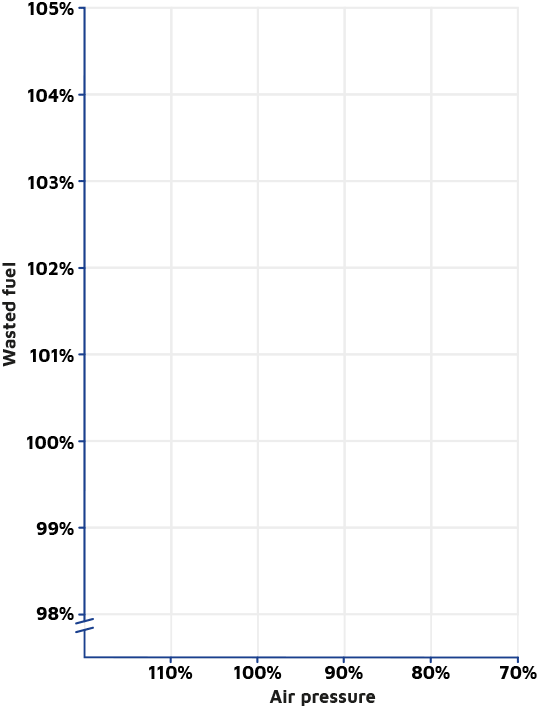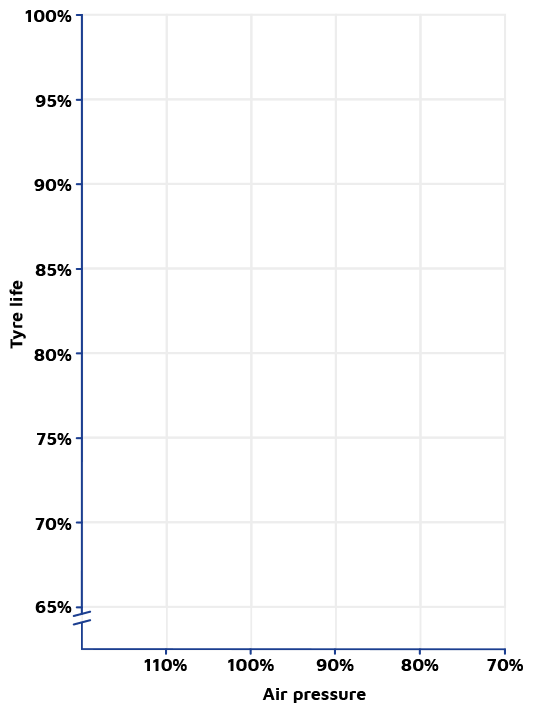Tyres create a type of drag called rolling resistance. Most of this rolling resistance is due to deformation of the tyre as it travels over the road. Rolling resistance is heavily dependent on inflation pressure.
A tyre operates at its optimum performance when inflated to its recommended pressure. However, every tyre will naturally leak air through the casing over time; a pressure loss of about 3% per month should be expected.Should the valve seal leak or if the tyre is punctured the pressure will drop much faster.



Tyres operating under the recommended pressure experience greater rolling resistance which has a negative effect on performance and durability – increasing fuel consumption and carbon emissions whilst reducing the service-life of the tyre. More importantly, the vehicle’s handling, braking and stability will also be adversely affected. If the tyre pressure is left uncorrected this can cause the tyre to overheat and break up, or even blow out with potentially disastrous results.
Over-inflation can reduce tyre life as well.

Incorrect air pressure reduces your miles per gallon

Incorrect air pressure dramatically shortens tyre service life

Wheel loss in commercial vehicles is very rare but can have catastrophic consequences.
Investigation has shown that the majority of cases are caused by one of the following errors:
This causes excess stress in the studs, nuts and other components - often causing complete and sudden failure.
Runs the risk of nuts working loose and subsequent wheel loss.
Dirt, dust, rust or paint can be trapped between components when tightened. If this matter compresses or collapses the fixing can work loose.
Damaged wheel nuts, studs, and other components can result in a wheel not being clamped properly even when a correct torque setting is achieved, leading to potential wheel loss.

Find out what TyreWatch can do for your business with a free consultation and online demonstration.
You can rely on TyreWatch to


